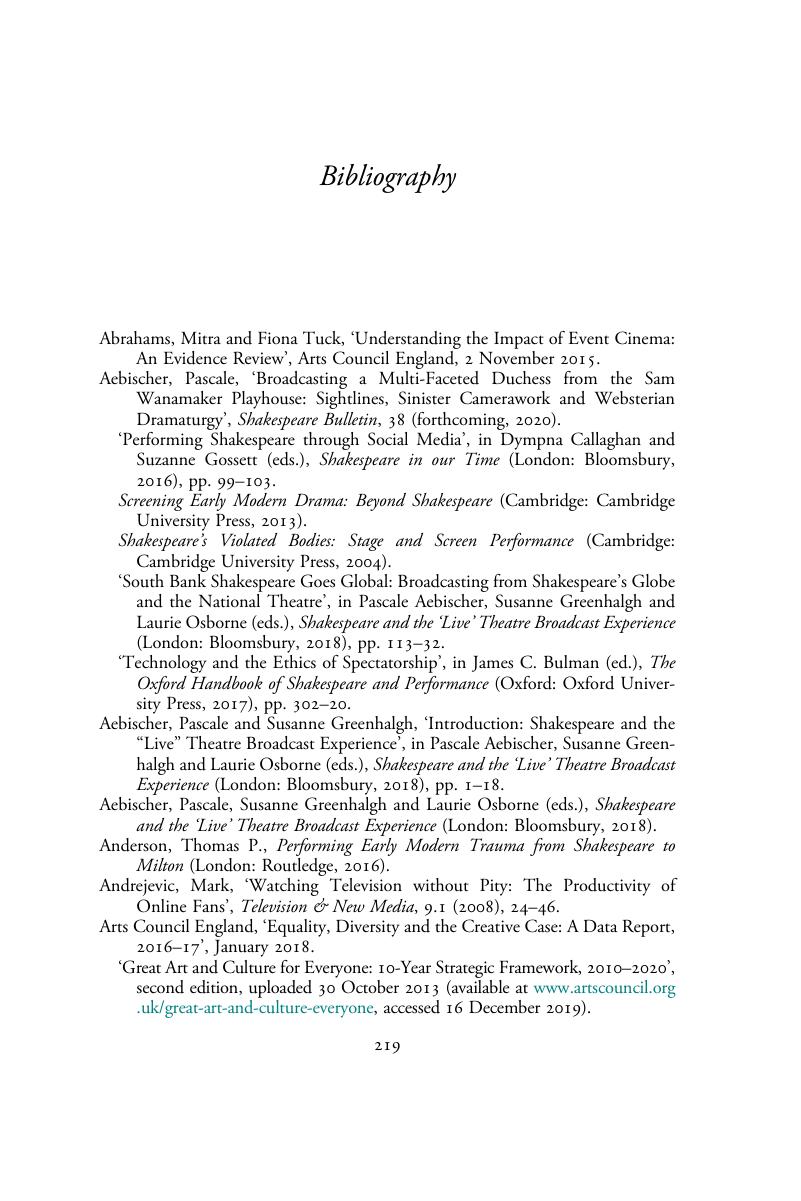Book contents
- Shakespeare, Spectatorship and the Technologies of Performance
- Shakespeare, Spectatorship and the Technologies of Performance
- Copyright page
- Contents
- Figures
- Tables
- Acknowledgements
- How to Read This Book
- Introduction
- Part I Candlelight and Architecture at the Sam Wanamaker Playhouse
- Part II Digital Technologies and Early Modern Drama at the National Theatre and the RSC
- Part III ‘Invisible’ Technology and ‘Liveness’ in Digital Theatre Broadcasting
- Concluding Most Obscenely: Offstage Technophelias
- Bibliography
- Index
- References
Bibliography
Published online by Cambridge University Press: 10 April 2020
- Shakespeare, Spectatorship and the Technologies of Performance
- Shakespeare, Spectatorship and the Technologies of Performance
- Copyright page
- Contents
- Figures
- Tables
- Acknowledgements
- How to Read This Book
- Introduction
- Part I Candlelight and Architecture at the Sam Wanamaker Playhouse
- Part II Digital Technologies and Early Modern Drama at the National Theatre and the RSC
- Part III ‘Invisible’ Technology and ‘Liveness’ in Digital Theatre Broadcasting
- Concluding Most Obscenely: Offstage Technophelias
- Bibliography
- Index
- References
Summary

- Type
- Chapter
- Information
- Shakespeare, Spectatorship and the Technologies of Performance , pp. 219 - 235Publisher: Cambridge University PressPrint publication year: 2020



